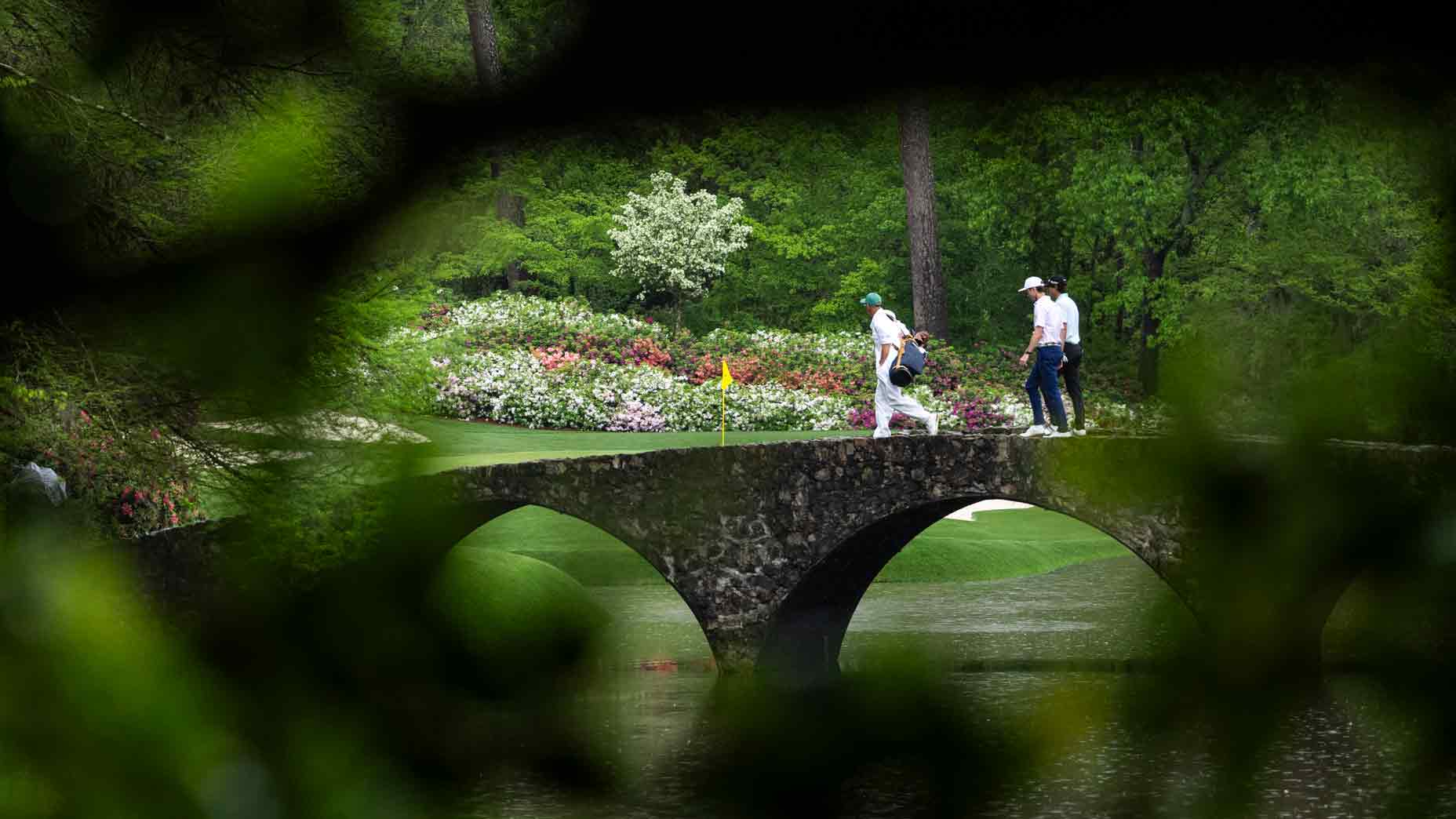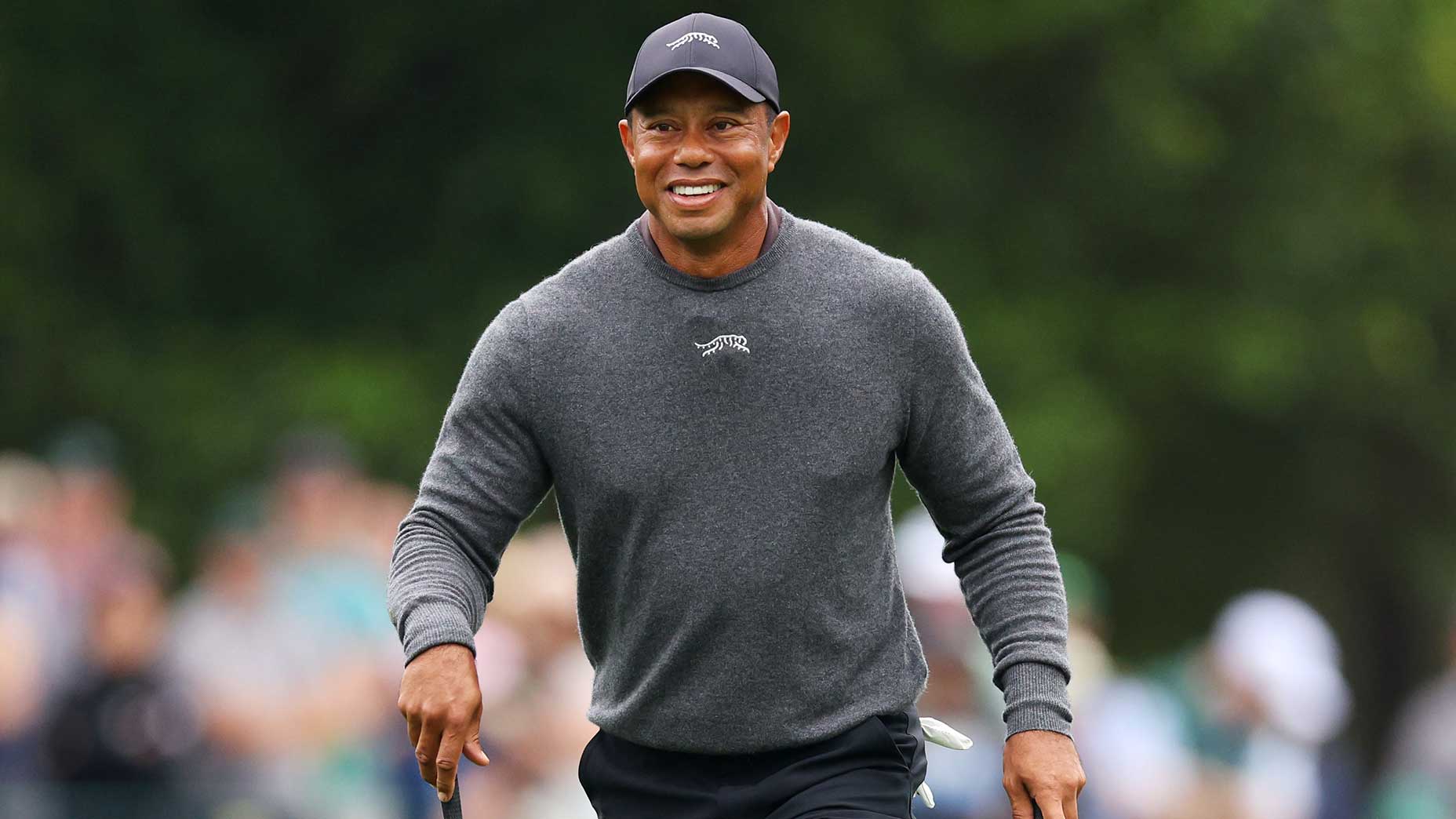PARAMUS, N.J. — Tiger Woods played four rounds of golf here, at this spectacular composite A.W. Tillinghast course, in 280 shots, 120 of them putts. He finished—who really cares? You’d be hard-pressed to call any one of his shots truly meaningful. Not one of them was going to change his life, anyway—or yours.
After Woods’s last outing — his runner-up finish at the PGA Championship, with a closing 64 — you’d be tempted to say he was spent. But he wasn’t. He looked great, he posed for pictures, he answered questions from reporters with good cheer. He high-fived little munchkins along the yellow ropes. His full shots were as good as they’ve been all year. But Woods’s putting was as bad as it’s been all year. It’s always something, in golf, right? Or as Woods said when it was all over, capturing perfectly the ying and yang of this exhausting sport, “Welcome to golf.” Woods was done for the week. Bryson DeChambeau was just getting to the 1st tee.
Don’t get the wrong idea here: the PGA Championship was exhausting, and it wasn’t just the heat, literal and otherwise. It was 17 on Sunday, the par-5, where he needed eagle and made a par, after an off-the-map sliced drive bound for a creek. The next moment was the really telling one. He smashed the driver into the ground and made a violent swipe in the direction of the left tee marker. How much did he reveal right then? How much desire and frustration and anger and disappointment? There was some speed in that swing. As the novelist Kevin Powers wrote recently, violence is a “form of intimacy.” Anybody who cannot relate doesn’t know what it means to play and care.
So FedEx I (Northern Trust) has come and gone. Here comes FedEx II. (Boston.) Then FedEx III. (Philadelphia.) Then FedEx IV. (Atlanta.) Then the Ryder Cup. There’s a good chance Woods will be at all five events. This is surely more golf than he wants to be playing, and his new surgically-repaired back is just part of it. (“I’m fused,” he said earlier this year.) The bigger part of it is that his kids are 11 and 9, playing soccer, starting their school years. When you strip away whole areas of Tiger Woods’s life, he’s just another middle-aged single father whose life revolves, first and foremost, around his kids. He’s playing all this golf to make up for lost time, to fulfill his contractual obligations and because, like ten thousand athletes before him, he needs to compete.
The time is now. “I don’t know how many more years I have left,” Woods said at Ridgewood.
Talk about compensating: in 2014 through 2017, Woods played in 17 events. When he plays the Boston stop, that will be his 16th event this year alone. Had Woods somehow won that PGA Championship, he might have found a way to rest his healing back from St. Louis all the way to Paris.

It’s interesting, how often his children come up in his remarks to reporters. In response to the first question he was asked Sunday afternoon, about recovering from this week, Woods brought up his exercise routine and his son and daughter: “I’ve got to do some work this week—take a couple days off, make sure my lifts are good and just be home with the kids.”
The British Open — the Open Championship — seems to be the major Woods relishes the most, because it does not emphasize his historic greatest strength — putting fast, sloped greens — and gives him a chance to show off every single thing a golfer can do with the other 13 clubs, especially those most primitive ones, the irons. He looked like he was in pain, Sunday at Carnoustie, when he had the lead briefly and late on Sunday before finishing three shots behind his playing partner, Francesco Molinari.
His kids were there. Describing his huddle with them as he came off the final green, Woods said, “I told them, ‘I tried. Hopefully you’re proud of your pops for trying as hard as I did.’ It’s pretty emotional. They gave me some pretty significant hugs there, and squeezed.
“I know that they know how much this championship means to me and how much it feels good to be back playing again. To me, it’s just so special to have them aware because I’ve won a lot of golf tournaments in my career, but they don’t remember any of them. The only thing they’ve seen is my struggles and the pain I was going through.”
It was a remarkable response. Then three weeks later, after the PGA Championship, he had a completely different response to a similar question, about what Woods’s week would mean to his kids. Woods was asked what his kids were saying about his week.
“I have no idea,” he said. “We haven’t talked about golf at all. We’ve talked about school and that’s about it.
I don’t want to talk to them about it this week. They’re not really interested in it. They’re interested in starting school and they’re nervous about starting school. So that takes far more precedence than me playing a major.”
His responses could not be more different, and they were both surely authentic and true. Maybe the difference is July (summer vacation) versus August (back-to-school), or Carnoustie (hard in every way) versus Bellerive (soft in every way). Maybe he just thought about the subject more, or saw it more from his kids’ perspective. Maybe somebody helped him see it differently. Any parent who has to travel regularly for work knows how complicated these things have been. Most kids — studies show! — don’t care what their parents do for a living. But (literally) around the world there are millions of people who care a great deal about what Tiger Woods does on a golf course. Those people pay him handsomely, give him status, enrich his life immeasurably. Woods has recognized this more this year than he ever has in the past. But the fan-player relationship is more transactional than most of us want to realize. The starting point for this summer of love between Woods and his fans is the quality of golf he is playing. If he was shooting 290 every event it would all be different. Woods has been (to generalize) more engaging and less guarded this year when talking to reporters than he has ever been — you can learn a lot about golf listening to him.
In actual fact, Woods, all through his career, has made himself available to reporters before the start of nearly every tournament in which he plays and after every round. He has surely spoken millions of words in his public remarks and has never had a serious misstep. It’s remarkable, really. These sessions at tournaments are the only opportunity to ask Woods questions about subjects that have little to do with golf. At the Northern Trust event, John Branch, a reporter for the New York Times, asked Woods about his relationship with Donald Trump. There is a building at Trump Doral with Woods’s name on it and in casual conversation Trump will raise Woods’s name often, and invariably in a positive light.
“Your relationship with Donald Trump,” Branch asked, “how would you describe that, professionally and personally?”
“Well, I’ve known Donald for a number of years,” Woods said. “We’ve played golf together. We’ve had dinner together. I’ve known him pre-presidency and obviously during his presidency.”
“At times,” Branch said, “I think a lot of people, especially people of color and immigrants, [feel] threatened by him and his policy. What do you say to people who might find it interesting that you have a friendly relationship with him?”
“Well, he’s the president of the United States,” Woods said. “You have to respect the office, no matter who is in the office. You may like or dislike the personality or the politics. But we all must respect the office.”
“Do you have anything more broadly to say about the state and the discourse of race relations?” Branch asked.
“No,” Woods said. “I just finished 72 holes and I’m really hungry.”
At times, Woods has talked about, not at length but with compassion, the plight of poor city kids, often of color, who live and go to school amid violence. He wrote, briefly but movingly, about the 2016 murder of Marcus Edwards, a former Tiger Woods Foundation student. He has commented over the years about other acts of violence, including the 9/11 attacks and the Parkland shooting. But nobody has ever heard him talk about his political views in public. You have a better chance of getting him to tell you his honest opinion of Billy Payne, TPC Sawgrass or hybrid clubs.
As for his last remark, it is reasonable to conclude that he was indeed hungry. Everybody knows no matter how many turkey-on-wheat sandwiches and bananas you eat on a course, it does nothing to quell your hunger pains. He was hungry and he is hungry, way beyond what Player Dining at the Ridgewood Country Club could possibly offer him.
Michael Bamberger may be reached at mbamberger0224@aol.com.








